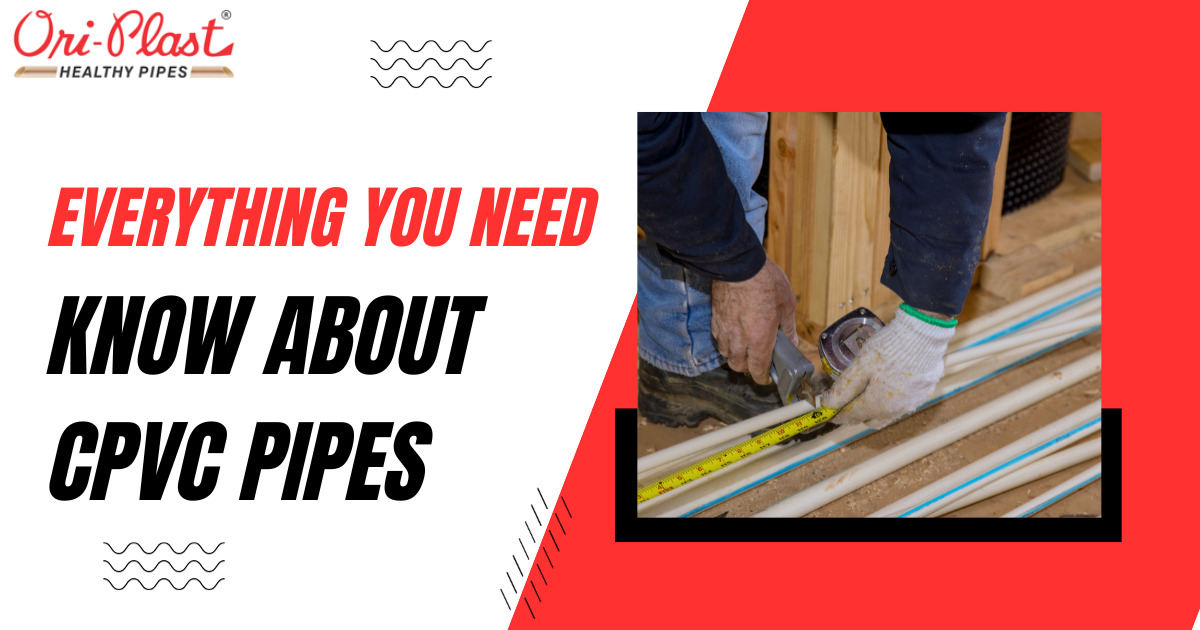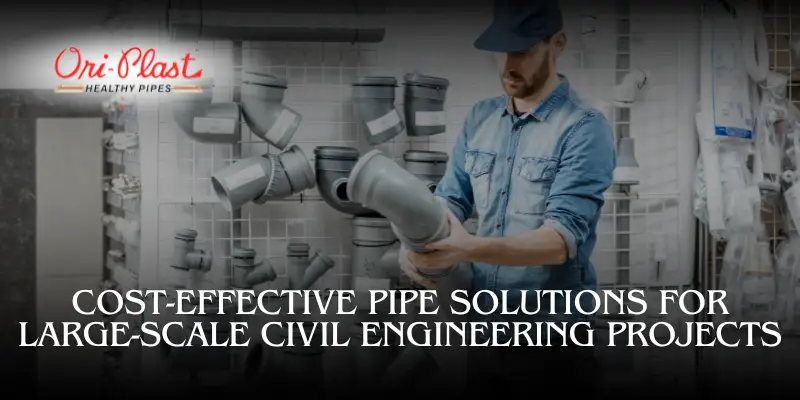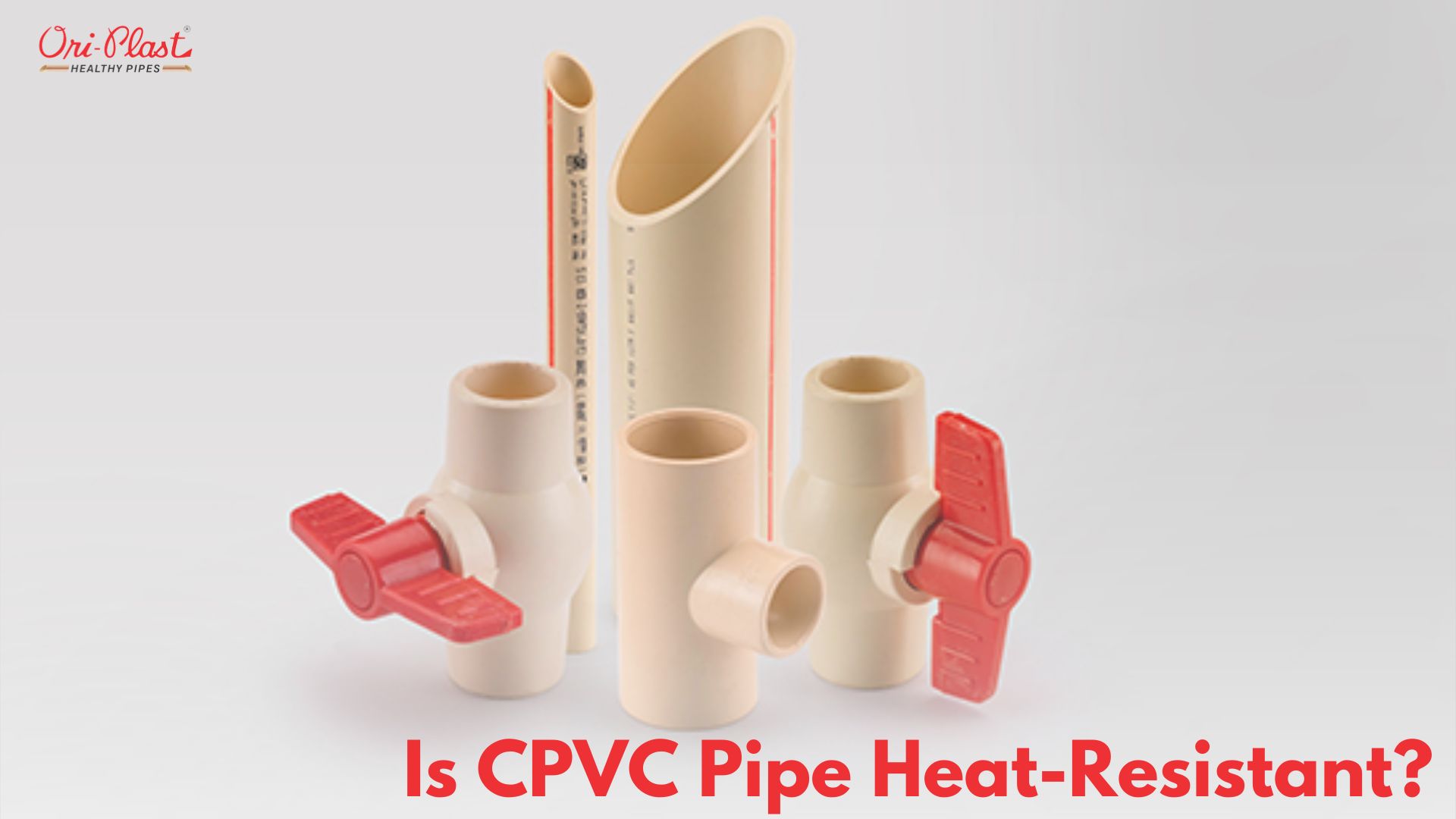The full form of CPVC is Chlorinated Polyvinyl Chloride, it is a versatile thermoplastic material known for its unique combination of physical properties and chemical resistance. CPVC is derived from the modification of PVC (Polyvinyl Chloride) through a chlorination process. This process involves exposing PVC resin to chlorine gas, resulting in the replacement of some hydrogen atoms with chlorine atoms along the polymer chain. The introduction of chlorine significantly enhances CPVC's heat and chemical resistance, making it an ideal choice for various applications, especially in the field of piping systems.
How CPVC Pipes are Made?
Production of PVC resin.
The first step is to produce PVC resin. This is done by polymerizing vinyl chloride monomer (VCM) in a high-pressure reactor. The VCM is stored under pressure in order to maintain a liquid state.
Chlorination of PVC resin.
The next step is to chlorinate the PVC resin to produce CPVC resin. This is done by adding chlorine to the PVC resin in a water slurry or fluidized bed chlorination process. The chlorination reaction is initiated by ultraviolet light.
Compounding.
The chlorinated PVC resin is then compounded with other ingredients, such as stabilizers, lubricants, and pigments. These ingredients are added to the resin to improve its properties, such as its heat resistance, toughness, and color.
Extrusion
The compounded CPVC resin is then extruded to form pipes. In extrusion, the resin is melted and forced through a die that shapes it into the desired cross-section.
Cooling and annealing
The extruded pipes are then cooled and annealed. Annealing is a heat treatment process that improves the properties of the pipes, such as their strength and toughness.
Cutting and finishing
The cooled and annealed pipes are then cut to length and finished. The finishing process may include removing burrs, polishing the surface, and labeling the pipes.
Features and Benefits of CPVC Pipes
CPVC pipes exhibit several key characteristics that make them suitable for a variety of applications:
Heat Resistance: One of the most notable features of CPVC is its ability to withstand high temperatures. CPVC pipes can handle hot water and other high-temperature fluids without warping or deforming.
Chemical Resistance: Highly resistant to corrosion and chemical degradation. It can transport a wide range of chemicals, acids, bases, and other corrosive substances without undergoing degradation.
Durability: Known for their durability and long service life. They are less prone to cracking, scaling, or pitting compared to some other materials, ensuring reliable performance over time.
Smooth Interior: Smooth interior surface that promotes efficient fluid flow and minimizes friction, reducing energy consumption in pumping systems.
Lightweight: CPVC pipes are lightweight, making them easier to handle and install than some other piping materials like metal.
Cost-Effective: Cost-effective choice for many applications due to its lower material and installation costs compared to materials like copper or stainless steel.
Ease of Installation: CPVC pipes can be joined using solvent cement, which simplifies the installation process and reduces labor costs. They can also be easily cut to the required length.
CPVC is a thermoplastic material derived from PVC through a chlorination process. It possesses key characteristics such as heat resistance, chemical resistance, durability, and ease of installation, making it a popular choice for various piping applications in construction, plumbing, and industrial settings.
Applications of CPVC Pipes
CPVC pipes have found a multitude of applications across various industries due to their exceptional properties, including heat resistance and chemical durability. Here are some of the primary applications of CPVC pipes:
A. Residential Plumbing
Potable Water Supply: CPVC pipes are commonly used in residential plumbing systems to transport both hot and cold potable water. Their ability to withstand high temperatures without deforming or corroding makes them an excellent choice for supplying hot water to faucets, showers, and appliances.
Sewage and Drainage: CPVC pipes are also utilized for sewage and drainage systems within residential buildings. Their smooth interior surface prevents clogs and blockages, ensuring efficient wastewater removal.
Irrigation: CPVC pipes are employed in residential irrigation systems to transport water to lawns, gardens, and landscaping features. Their resistance to corrosion and UV degradation makes them suitable for outdoor use.
B. Commercial and Industrial Uses
Chemical Transport: CPVC pipes are widely used in chemical processing industries for transporting various chemicals, acids, and bases. Their exceptional chemical resistance ensures that the transported substances do not corrode or degrade the piping system.
Manufacturing: In industrial settings, CPVC pipes serve as reliable conduits for various processes, such as conveying cooling water in manufacturing facilities, including those in the automotive and electronics industries.
Air Conditioning and Refrigeration: CPVC pipes are employed in commercial HVAC (heating, ventilation, and air conditioning) systems for both hot and cold water distribution. Their heat resistance and durability ensure the efficiency of these systems.
C. Fire Sprinkler Systems
Fire Suppression: CPVC pipes play a vital role in fire sprinkler systems, where they transport water to sprinkler heads for fire suppression. Their fire resistance and ability to withstand high temperatures make them essential components in safeguarding buildings and occupants in case of fire emergencies.
Reliability: CPVC's reliability in fire sprinkler systems reduces maintenance costs and ensures that the system is ready to respond to fires effectively when needed.
D. Chemical Processing
Corrosive Chemical Transport: Industries involved in chemical processing rely on CPVC piping systems to transport corrosive chemicals safely. The pipes' resistance to chemical attack ensures that the integrity of the transport system is maintained, minimizing the risk of leaks and chemical spills.
Laboratory Applications: CPVC pipes are also used in laboratory settings for the distribution of chemicals and acids. Their resistance to chemical corrosion and ease of installation make them suitable for laboratories of various types, including research
Limitations of CPVC pipes
Temperature limitations: CPVC is not as heat-resistant as some other materials, such as copper or steel. It can become brittle and crack at temperatures below freezing, and it should not be used for applications where the water temperature will exceed 92 degrees Celsius.
Chemical compatibility: CPVC is not compatible with all chemicals. It can be damaged by some solvents and other corrosive substances. It is important to check the compatibility of CPVC with any chemicals that will be transported through it.
Vulnerability to physical damage: CPVC is more vulnerable to physical damage than some other materials, such as copper or steel. It can be easily scratched or cracked, especially if it is not properly supported.
Is CPVC Safe for Drinking Water?
Yes, CPVC is considered safe for drinking water. It is made from chlorinated polyvinyl chloride (PVC), which is a non-toxic material. CPVC is also resistant to corrosion and leaching, which means that it will not release any harmful chemicals into the water.
These pipes are approved by the NSF (National Sanitation Foundation) for use in drinking water applications. The NSF is an independent organization that tests and certifies products for safety and performance.
However, it is important to note that the pipes should not be used for applications where the water temperature will exceed 92 degrees Celsius. At these temperatures, CPVC can become brittle and crack.
Overall, CPVC is a safe and durable material that can be used for drinking water applications. It is important to choose CPVC pipes that are NSF-certified and to install them properly to ensure their safety.
Here are some additional things to keep in mind about the safety of CPVC pipes for drinking water:
- CPVC pipes should be installed by a qualified plumber to ensure that they are properly supported and connected.
- CPVC pipes should be regularly inspected for signs of damage, such as cracks or leaks. If CPVC pipes are damaged, they should be replaced immediately.
- By following these simple guidelines, you can help to ensure that your CPVC pipes are safe for drinking water.
How Long Do CPVC Pipes Last?
CPVC pipes can last for 50 to 75 years under optimal conditions. However, the actual lifespan of CPVC pipes can vary depending on a number of factors, such as:
The quality of the materials used: Made from high-quality materials will last longer than those made from low-quality materials.
The installation method: CPVC pipes that are installed properly will last longer than those that are not installed properly.
The environment: CPVC pipes that are exposed to harsh conditions, such as extreme temperatures or chemicals, will not last as long as those that are not exposed to harsh conditions.
Factors Affecting Longevity
The following are some of the factors that can affect the longevity of CPVC pipes:
Temperature: CPVC pipes can become brittle and crack at temperatures below freezing, so they should not be used in applications where the water temperature will drop below freezing.
Chemical exposure: CPVC pipes can be damaged by some chemicals, so it is important to check the compatibility of CPVC with any chemicals that will be transported through it.
Physical damage: CPVC pipes can be easily scratched or cracked, so it is important to protect them from physical damage.
Installation: CPVC pipes should be installed properly by a qualified plumber to ensure that they are properly supported and connected.
Maintenance: CPVC pipes should be regularly inspected for signs of damage, such as cracks or leaks. If any damage is found, it should be repaired or replaced immediately.
CPVC vs. PVC: Which is Better?
The best material for your needs will depend on the specific application. If you need a pipe that can withstand high temperatures and chemicals, then CPVC is the better choice. However, if you are looking for a less expensive option or a pipe that is stronger and more flexible, then PVC is the better choice.
Key differences between CPVC and PVC
CPVC and PVC are both thermoplastics that are commonly used for plumbing applications. They have similar properties, but there are some key differences between the two materials.
CPVC
Chlorine content: CPVC has a higher chlorine content than PVC. This makes CPVC more resistant to heat and corrosion.
Temperature resistance: CPVC can withstand temperatures up to 200 degrees Fahrenheit, while PVC can only withstand temperatures up to 140 degrees Fahrenheit.
Chemical resistance: CPVC is more resistant to chemicals than PVC.
Cost: CPVC is more expensive than PVC.
PVC
Chlorine content: PVC has a lower chlorine content than CPVC. This makes PVC less resistant to heat and corrosion.
Temperature resistance: PVC can withstand temperatures up to 140 degrees Fahrenheit, while CPVC can withstand temperatures up to 200 degrees Fahrenheit.
Chemical resistance: PVC is less resistant to chemicals than CPVC.
Cost: PVC is less expensive than CPVC.
Conclusion
Chlorinated Polyvinyl Chloride (CPVC) is a remarkable thermoplastic material that has revolutionized the world of piping systems. Derived from the chlorination of PVC, CPVC possesses a unique set of properties that make it indispensable in various applications. Its ability to withstand high temperatures, resist chemical corrosion, and offer cost-effective solutions has elevated its importance across numerous industries.
As we've explored in this article, CPVC pipes offer numerous advantages, from durability and longevity to ease of installation and versatility. When considering CPVC for your specific needs, it's essential to assess the requirements of your project carefully. Factors such as temperature requirements, chemical compatibility, and budget constraints should guide your decision-making process. Additionally, understanding the differences between CPVC and other piping materials, such as PVC or copper, can help you make an informed choice.
While CPVC pipes offer a wide range of benefits, it's crucial to consult with experienced professionals and experts in the field, especially when dealing with complex or specialized applications. Professionals can provide valuable insights and guidance tailored to your specific project requirements. Whether you're planning a residential plumbing system, an industrial chemical process, or a fire sprinkler installation, seeking the advice of knowledgeable professionals can help ensure the success and safety of your project.
CPVC pipes have emerged as versatile and reliable solutions for a multitude of applications, offering durability, chemical resistance, and cost-effectiveness. By understanding the significance of CPVC and seeking expert guidance, individuals and industries alike can harness the full potential of CPVC pipes for their diverse fluid transport needs.




